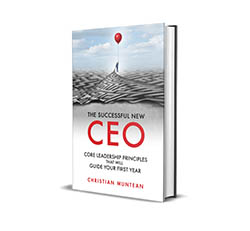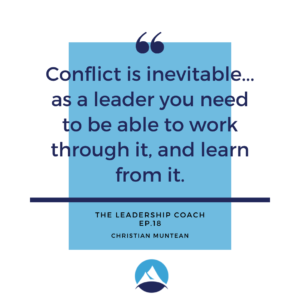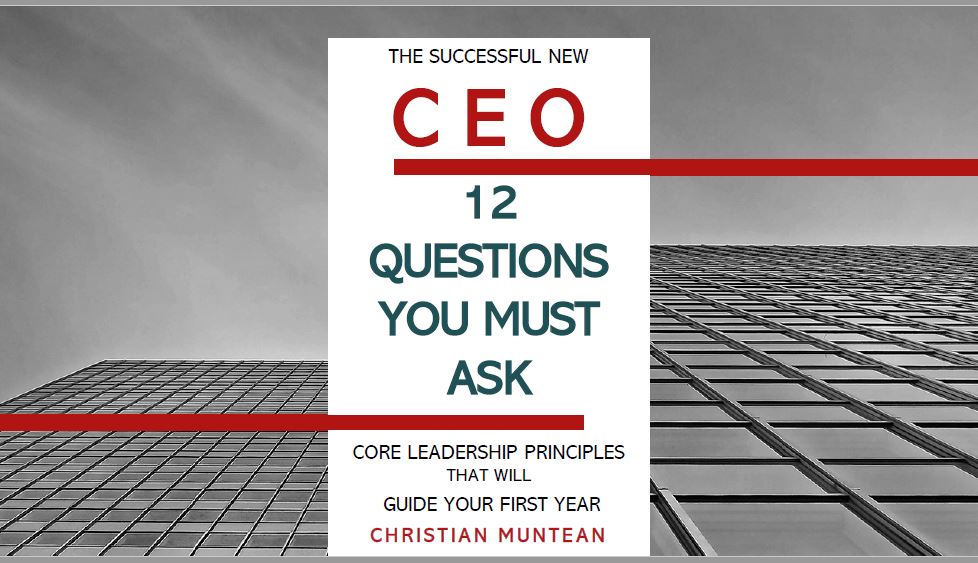How To Build Unity In The Workplace

 The owner of a successful construction company was getting old. He enjoyed coming to work but no longer had the energy or interest to “take the next hill.” His wife had recently begun reminding him of promises made while building the business. It was time for her to collect on those trips, visits (together) to grandkids, and uninterrupted summers.
The owner of a successful construction company was getting old. He enjoyed coming to work but no longer had the energy or interest to “take the next hill.” His wife had recently begun reminding him of promises made while building the business. It was time for her to collect on those trips, visits (together) to grandkids, and uninterrupted summers.
He saw that he needed to prepare for his exit. Over the years, he had built a management team of high performers. However, while they worked well independently, when together, they constantly argued. He wanted to sell them his company. They very much hoped to buy it. But he was afraid that they would pull it apart. The owner tried many ways to encourage them to work together better. He tried talking to them, bought them books, sent them to conferences, hired consultants. Nothing seemed to work. They were unable, or unwilling, to recognize the risk they were to themselves and the company.
Finally, he decided to give them a practical example of how they were undermining their own success. Monday morning, he called them into the conference room. On the table sat a bundle of survey stakes bound together with plastic straps.
“I’m selling this company. But I’m trying to decide how and to whom.”
While his managers’ faces remained unexpressive, each felt a twinge of excitement. Perhaps now they could finally be an owner. But along with the excitement, there was a sense of threat. Would they have to be owners together?
The owner continued, “This bundle of sticks is part of my decision-making process. I’d like you to take individual turns trying to break the bundle in half.”
This felt silly. But one by one, the managers tried. Some tried to snap it over their knee. Others tried jumping on it. One tried to find a way to leverage it under the leg of the conference room table. All failed.
Then he cut the straps and opened the bundle. He handed the stakes out, one-by-one to the managers. He asked them to try breaking the individual stakes. They did so easily. Then he said, “My friends if you are like-minded and are willing to be humble and work together, you will be like the bundle of stakes. Unbreakable by the competition and the ups and downs of the economy. But if you remain siloed and competitive over turf and recognition, this company will be broken apart as easily as individual stakes.”
What is Unity?
The story is a reframing of an Aesop’s Fable. But the experience of a disunified team is recognizable in organizations across the country. To build unity, there needs to be agreement about what it means. I would propose that organizational unity is best represented by the word harmony – in the musical sense. Different musicians and instruments, sometimes playing separately, but working to create something together.
Organizational unity benefits from sharing but not sameness. A shared sense of values, identity, and purpose are keys to building long-term unity. They are also the same ingredients used in things like building culture, or alignment, or strong teams. Sameness is a form of unity. But it is unity without dynamism or life. It resists differences, disagreements, changes, or growth.
The strongest form of unity is like an orchestra playing a symphony or a jazz band jamming. Whether their notes are scripted or they improvise – they are playing together. The best and most mature musicians know how to make everyone else sound better.
How to Build Unity?
It doesn’t come out in the story above. But the owner in the story likely bears the responsibility for his team’s disunity. Even though it pains him and he didn’t intend for it – he built it or allowed it to develop.
Leaders build unity – it doesn’t build itself.
If he wants to turn his team around – it’ll take more than pithy illustrations. It’ll take three intentional kinds of actions:
- Create a sense of Shared Purpose: Or Inspire a Shared Vision. Either way, the first question that needs to be answered is “Why would we want to be all in this together?” That question is answered by helping the group create a common purpose or vision that everyone can easily share.
- Clarify how everyone’s efforts contribute to that purpose: The best leaders make sure that everyone knows how to contribute to the shared purpose and that they are aware of how others contribute. No one wonders how they fit. Or what their roles are. There are no mystery positions or departments. Everyone is pulling together.
- Identify (and remind everyone of) the benefit: First, the benefit of accomplishing the purpose needs to real and meaningful. An owner’s desire for more profits isn’t as meaningful to others. Get clarity on how others benefit from success. Second, people forget, or get short-sighted, or distracted. You need to keep reminding them.
A Way of Leading, Not an Event
I describe these as actions. But really they are three processes a leader needs to engage in. The way a conductor reads the sheet music, listens to the orchestra, and keeps time and directs – all at the same time. A good conductor doesn’t hold a retreat to do this. It is conducting.
A good leader doesn’t build unity or a team or alignment in an event either. They lead actively and well. You can do it too.
Take good care,
Christian
There are 𝟭𝟮 𝗰𝗿𝗶𝘁𝗶𝗰𝗮𝗹 𝗾𝘂𝗲𝘀𝘁𝗶𝗼𝗻𝘀 to ask before accepting a new CEO position. Do you know what they are? Instantly download my free e-book here.
Vision Building Sprints
If you or your team are wrestling with defining your vision and would like help, I’m offering the opportunity for a “Vision Sprint”. This is a dynamic calibrating exercise. We will tightly dial in on your vision for the year and the key steps you need to take to get there. I’m offering either individual sessions ($2500) or team sessions ($4000).
Contact me at christian@christianmuntean.com if interested in learning more or setting up a time.
The Successful New CEO – FREE BOOK OFFER
As an executive coach, I’ve found that the experiences for new executives (or experienced executives in new roles) tend to touch on familiar themes. No one’s situation is the same. But there are common principles that, when followed, do guide executives to success. I introduce those core principles in my new book, The Successful New CEO. I’d like to give you a free copy (just pay shipping)!
situation is the same. But there are common principles that, when followed, do guide executives to success. I introduce those core principles in my new book, The Successful New CEO. I’d like to give you a free copy (just pay shipping)!
The book is divided into four parts:
- Becoming an Executive: Leaders can only lead out of who they are. How do you become the kind of person who successfully and gracefully inhabits this role?
- Seven Essential Executive Skills: The skills that earned you this new role may not be the ones that you need in the role. What are the key leadership skills that become even more important at the executive level?
- Leading Your Leadership Team: More than likely, you’ll be leading other leaders. How do you lead a confident, effective leader? How do you build a team out of leaders?
- First Things: Where do you start? How do you quickly build credibility and engagement? What is too fast or too slow?
The goal of The Successful New CEO is to help you quickly gain the confidence of your team, successfully address the issues you will discover, score early wins, and set a course for a fruitful future.
If you’d like to see how this book will benefit you or someone you know, I’d like to make it available to you for free! Click Here.
Find the value of your company with my free assessment tool: The Value Builder System
The Value Builder System™ is a 13-minute online questionnaire that evaluates your business on the eight factors that contribute more to its attractiveness and value. These factors are scored on a scale of 1-100. Businesses that score over 80 are likely to command 70%-100% higher value than others.
THE LEADERSHIP COACH Podcast
In my podcast, THE LEADERSHIP COACH, we explore effective, high impact and enjoyable leadership. We talk about personal development and the attributes that all effective leaders possess. I interview other leadership experts who share their knowledge and tips to help you build the confidence to lead and learn the habits of good decision-making.
Opportunities
Free Resource: How To Accomplish More Without Doing More is a workbook I created to walk leaders through a process of helping you own your calendar, liberate your time, and still get more done. Download it for free!
Executive and Leadership Coaching: Do you feel overwhelmed? Are you not getting the results you expect from the effort you are putting in? Do you find yourself facing similar challenges time and time again? Would you like to change specific ways of relating or reacting? If you would like to experience predictable, measurable growth Contact me.
Profitable Exit Strategy Workshop: Are you a business owner or partner? Are you over 55? Are you starting to think about exiting your business or active management in the next 3-5 years?
- Are you curious about what your business might be worth?
- Would you like to discover the specific steps you need to take to increase its value and become highly attractive to a buyer?
- Are you planning on handing it over to family or employees and you want to ensure long-term success?
If so, contact me now
Article Categories
Popular articles

Download my free 10-page eBook:
How To Accomplish More Without Doing More:
Eight Proven Strategies To Change Your Life
Discover how to save eight hours during your workweek-even if you're too busy to even think about it. The resource every maxed out executive needs.

